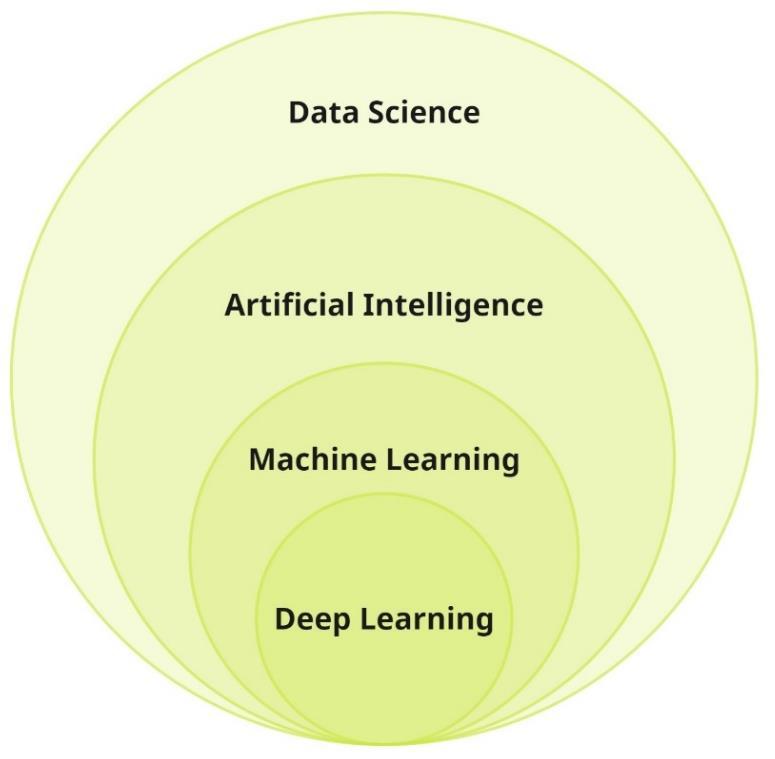Machine Learning Applied to Building Information Models
4. NEURAL NETWORK ARCHITECTURAL SPACE
APPLICATIONS
ON
Machine Learning applications on space layout design are the primary focus of this dissertation. There are many aspects in which the layout design can be improved using ML techniques. In this study, machine learning techniques are proposed to develop insight from the available information allowing a transition into knowledge acquisition, as suggested in Figure 4. However, the raw data from the BIM model do not have the correct structure to teach an ML algorithm. To overcome this hurdle and form the data from BIM models in a machine-readable format, this study suggests introducing the Space Syntax (SS) theory as an intermediating “language”. It is a traditional tool for analysing urban and architectural design data; SS also enables the use of computational tools to analyse architecture and urban data. SS analyses can facilitate the extraction of the data from BIM models and add an extra value and dimension to the extracted data. 4.1.
Principles of Space Syntax theory
Architecture is a complex process involving a satisfying combination of creative and functional processes. This process includes geometric, aesthetic, sociological, cultural, human and more aspects requiring simplified analysing methods (Brown, 1997). Space Syntax theory was developed as an analytic theory of architecture. It is a set of techniques to analyse spaces and human interaction. Fundamentally, the theory consists of four bases: spaces as geometric shapes, measures of spatial relationship, representation of results and theories of analyses (UCL, 2021). The theory was developed as a result of research founded at The Bartlett, University College London in the 1970s by Hillier B., Hanson J. et al. (“Space syntax network,” 2021; Van Nes and Yamu, 2018). The book "The social logic of space" was published by Hillier and Hanson (1984) as an output of that research. The general concept of approach basically ignores the individual properties of objects but focuses on a general pattern that also represents “a neutral framework for social and cultural forms” (Brown, 1997, p. 20). Brown (1997) emphasizes that human behaviour should not be considered as an action happening in space, the human behaviour has its own spatial patterns and forms. However, nowadays, the theory is mainly applied to space analyses on an urban scale; it is also applicable in smaller architectural building scale. For a complete understanding of the current work, Appendix 1 introduces an explanation of the types of analyses in Space Syntax in building scale. The appendix also expands the forms of spatial representation and the computational tools used for space exploration and analyses. 4.1.1.
Tools for Space Syntax analyses and data extraction
Space syntax is a continuously developing approach starting from the last century till nowadays. Space syntax became a link not only between factors of human behaviour but also different scientific areas – in the context of this study, proposed as a form of converting signals into knowledge. Thus, the theory has been applied to mathematics, informatics and philosophical and sociological domains (Van Nes and Yamu, 2018). In excess of theoretical perception and methodology surveys, new computational, Erasmus Mundus Joint Master Degree Programme – ERASMUS+ European Master in Building Information Modelling BIM A+
35





